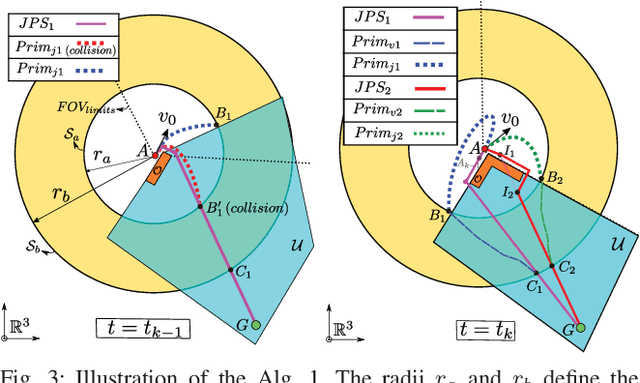John Ware
Real-Time Planning with Multi-Fidelity Models for Agile Flights in Unknown Environments
Oct 02, 2018



Abstract:Autonomous navigation through unknown environments is a challenging task that entails real-time localization, perception, planning, and control. UAVs with this capability have begun to emerge in the literature with advances in lightweight sensing and computing. Although the planning methodologies vary from platform to platform, many algorithms adopt a hierarchical planning architecture where a slow, low-fidelity global planner guides a fast, high-fidelity local planner. However, in unknown environments, this approach can lead to erratic or unstable behavior due to the interaction between the global planner, whose solution is changing constantly, and the local planner; a consequence of not capturing higher-order dynamics in the global plan. This work proposes a planning framework in which multi-fidelity models are used to reduce the discrepancy between the local and global planner. Our approach uses high-, medium-, and low-fidelity models to compose a path that captures higher-order dynamics while remaining computationally tractable. In addition, we address the interaction between a fast planner and a slower mapper by considering the sensor data not yet fused into the map during the collision check. This novel mapping and planning framework for agile flights is validated in simulation, showing replanning times of 5-40 ms in cluttered environments, a value that is 3-30 times faster than similar state-of-the-art planning algorithms.
 Add to Chrome
Add to Chrome Add to Firefox
Add to Firefox Add to Edge
Add to Edge